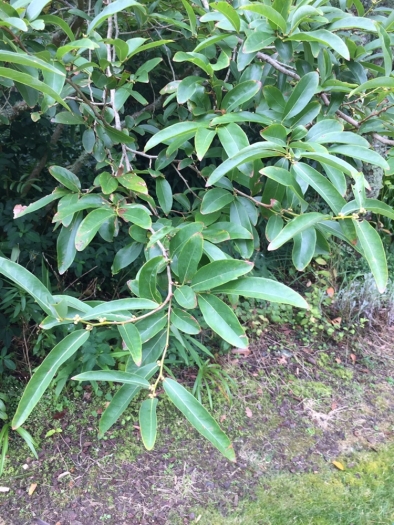Oriental Spicebush
(Lindera angustifolia)
Oriental Spicebush (Lindera angustifolia)
/
/

© Stephen Thorpe
CC BY 4.0
Image By:
© Stephen Thorpe
Recorded By:
Copyright:
CC BY 4.0
Copyright Notice:
Photo by: © Stephen Thorpe | License Type: CC BY 4.0 | License URL: http://creativecommons.org/licenses/by/4.0/ | Uploader: stephen_thorpe | Publisher: iNaturalist |
























Estimated Native Range
Summary
Lindera angustifolia, commonly known as Oriental spicebush, is a deciduous shrub native to forest margins, stream banks, and mountain slopes in East Asia, including China, and Korea. It typically grows to a height of 6-12 feet (1.8-3.6 meters) and a similar width, with a rounded form. The leaves are lanceolate and turn a striking bright yellow to red in the fall, providing significant ornamental value. Before the foliage emerges in spring, small, yellow, and mildly fragrant flowers bloom, which are quite showy given their early appearance and contrast against the bare branches.
Oriental spicebush is valued for its exceptional fall color and early spring flowers, making it a popular choice for seasonal interest in temperate gardens. It is often used in border plantings, as a specimen, or in naturalized areas. This shrub is relatively low-maintenance, requiring medium water and thriving in moist, well-drained soils with an acidic to neutral pH. It can tolerate full sun to partial shade, with the best fall color typically occurring in sunnier sites. While generally pest and disease resistant, it can occasionally suffer from leaf spot or blight. Oriental spicebush is not known for aggressive roots or significant invasiveness issues, but it should be monitored as it can spread by suckering.CC BY-SA 4.0
Oriental spicebush is valued for its exceptional fall color and early spring flowers, making it a popular choice for seasonal interest in temperate gardens. It is often used in border plantings, as a specimen, or in naturalized areas. This shrub is relatively low-maintenance, requiring medium water and thriving in moist, well-drained soils with an acidic to neutral pH. It can tolerate full sun to partial shade, with the best fall color typically occurring in sunnier sites. While generally pest and disease resistant, it can occasionally suffer from leaf spot or blight. Oriental spicebush is not known for aggressive roots or significant invasiveness issues, but it should be monitored as it can spread by suckering.CC BY-SA 4.0
Plant Description
- Plant Type: Shrub
- Height: 7-10 feet
- Width: 4-6 feet
- Growth Rate: Moderate
- Flower Color: Yellow
- Flowering Season: Spring
- Leaf Retention: Deciduous
Growth Requirements
- Sun: Full Sun
- Water: Medium
- Drainage: Medium
Common Uses
Bird Garden, Border Plant, Butterfly Garden, Hedges, Low Maintenance, Showy Flowers
Natural Habitat
native to forest margins, stream banks, and mountain slopes in East Asia, including China, and Korea
Other Names
Common Names: Xia Ye Shan Hu Jiao, Narrow-Leaf Spicebush
Scientific Names: , Lindera angustifolia, Benzoin angustifolium, Benzoin angustifolium var. glabrum, Benzoin salicifolium, Benzoin sinoglaucum, Lindera angustifolia var. glabra, Lindera glauca var. salicifolia, Lindera nakaiana, Lindera salicifolia,
GBIF Accepted Name: